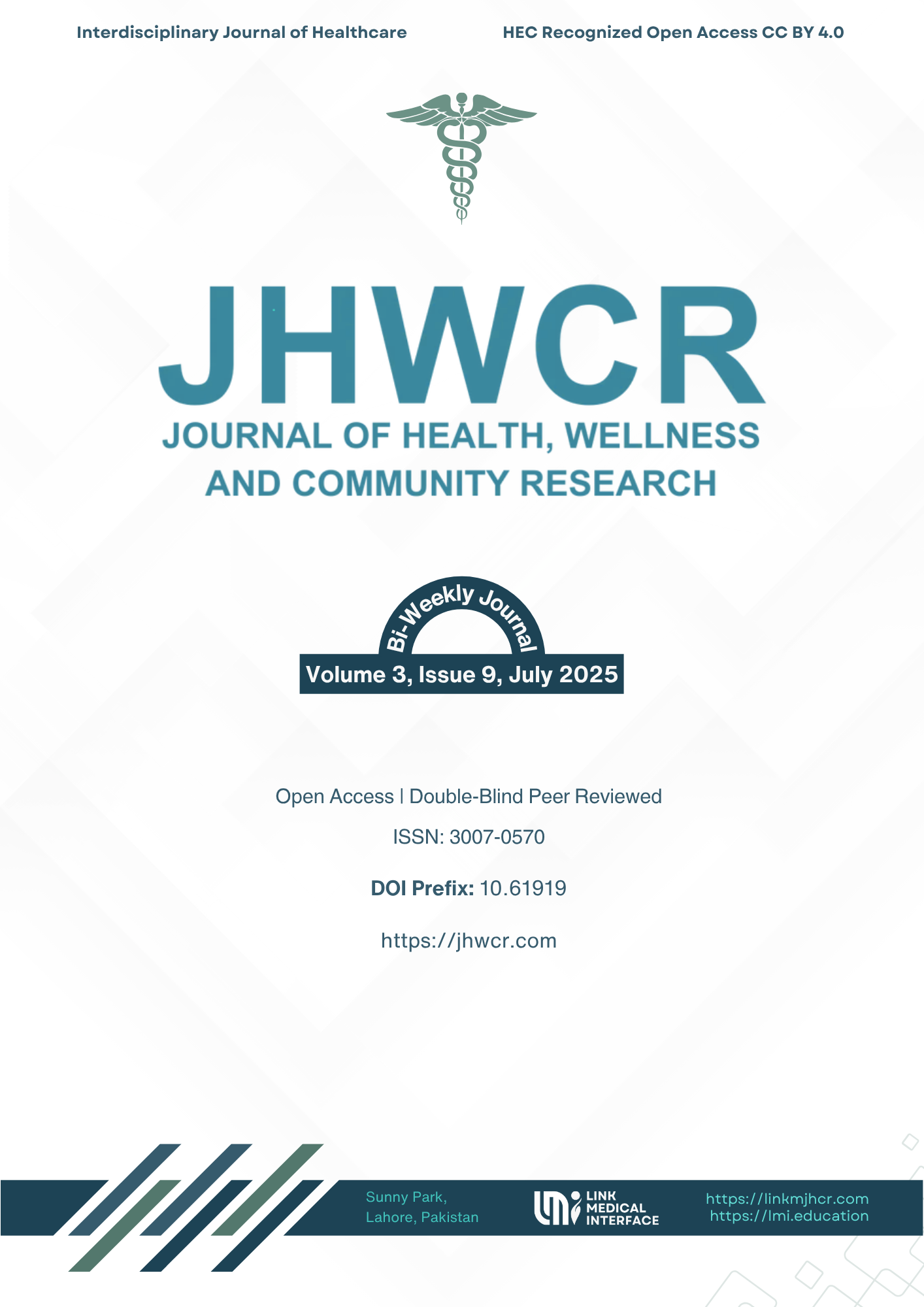Correlation Between Gastrocnemius Muscle Strain Severity and Functional Performance in Footballers
DOI:
https://doi.org/10.61919/f76vp302Keywords:
Gastrocnemius muscle strain, functional performance, football injuries, LEFS, Hop Test, ATRS, TAS, rehabilitation, return to playAbstract
Background: Gastrocnemius muscle strain is a frequent injury among footballers due to the sport’s high physical demands involving sprinting, jumping, and rapid directional changes. These injuries contribute to substantial functional limitations, reduced performance, and delayed return to play. Despite the prevalence of gastrocnemius strains, the relationship between strain severity and functional performance remains insufficiently characterized, limiting evidence-based rehabilitation planning. Objective: To determine the correlation between gastrocnemius muscle strain severity and functional performance in footballers using validated assessment tools. Methods: A cross-sectional observational study was conducted among 158 football players aged 18–40 years diagnosed with gastrocnemius muscle strain at Superior University Sports Club, Lahore. Strain severity was categorized as mild, moderate, or severe using standardized clinical examination. Functional performance was assessed using the Lower Extremity Functional Scale (LEFS), Hop Test, Achilles Tendon Rupture Score (ATRS), and Tegner Activity Scale (TAS). Data were analyzed using Spearman’s correlation and Kruskal–Wallis tests, with p < 0.05 considered statistically significant. Results: There was a moderate, statistically significant negative correlation between strain severity and all functional performance measures: LEFS (ρ = –0.312, p = 0.001), Hop Test (ρ = –0.345, p = 0.002), ATRS (ρ = –0.298, p = 0.001), and TAS (ρ = –0.327, p = 0.001). Group-wise comparisons demonstrated significant differences in functional scores across severity categories (p < 0.05). Conclusion: Increasing severity of gastrocnemius muscle strain is associated with progressively reduced functional performance in footballers, underscoring the need for severity-stratified rehabilitation strategies.
Downloads
Published
Issue
Section
License
Copyright (c) 2025 Nida Fatima, Tehreem Mukhtar, Isha Arshad, Maryam Batool, Romaisa Afghan, Gulnaz Yamin (Author)

This work is licensed under a Creative Commons Attribution 4.0 International License.


